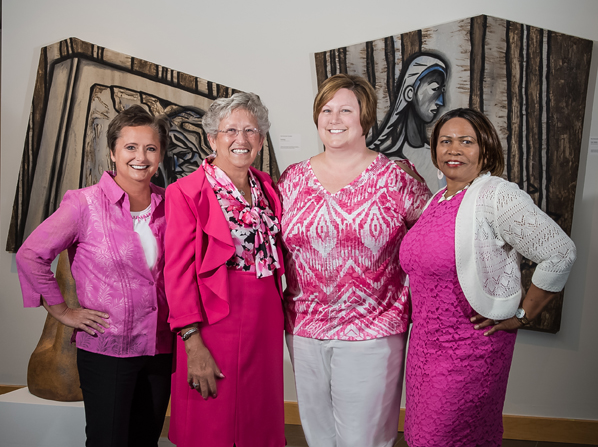
In 2015, there are more than 2.5 million women in the United States with a history of breast cancer – 2.5 million survivors. Chances are, someone you know personally has or will have breast cancer in their lifetime – be it a family member, friend, or neighbor. It is estimated one in eight American women will develop breast cancer in their lifetime, with chances significantly increasing after age 40.
The most common type of breast cancer is ductal carcinoma, which begins in the ducts that carry the milk to the nipple. The breast is also made up of fat and connective tissue, lymph nodes, and blood vessels. Breast cancer occurs often when cells in the breast grow out of control and form a tumor, which can be either malignant (cancerous) or benign (non-cancerous). Invasive breast cancer is one that spreads from those ducts to the rest of the tissue and often the lymph nodes. According to the National Cancer Institute, there are nearly 230,000 new cases of breast cancer in women each year.
While survival rates vary by stage of detection and age of diagnosis, the American Cancer Society confirms that a stage III breast cancer diagnosis still garners a passing grade of 72 percent when it comes to survival. In fact, female breast cancer rates have been steadily on the decline since 2000. With early detection, regular exams and improving technology, outcomes are more favorable than ever. In fact, even though the Washington, D.C. region has some of the highest breast cancer incidence rates in the country, there has never been more public support for women with breast cancer and survivors willing to tell their stories than there is today.
Throughout time, women have consistently faced challenges with courage and class. We create new life, we raise children, we grow our careers, and more frequently than desired, we battle breast cancer – about 12.3 percent of us, actually. Breast cancer is a disease that affects women of all backgrounds. Consequently, we support one another regardless of race, religion, class, or age – and each story of survival is an inspiration for a better tomorrow.
With each diagnosis, women have the opportunity to share their motivators throughout their personal breast cancer journey. Not every day is bright during treatment, but learning from others who overcame the rough patches can ultimately help women keep their spirits up in times of need.
This year, Southern Maryland Woman features four impressively strong individuals who, each in their own way, found their key to survival. While friends and family continue to be a core support system in each woman’s life, their motivators are unique and their stories are captivating. From an undying faith to lifetime hobbies like fitness and quilting, these women focused their strengths on the positive.
This is not to ignore the emotional burden cancer brings to not only the individual, but to all those involved. It can be tough to stay positive, and those who struggle should never feel guilt or blame themselves in the process. Coping with cancer comes in different shapes and sizes as each woman undergoes their individual journey, both physically and mentally. Because of this, it is important to bring awareness to these differences and use them to unite the cause.
Fighting cancer is deeply rooted in American culture. So much so, that October is National Breast Cancer Awareness month. There are numerous support groups and events, both locally and nation-wide, dedicated to breast cancer research, as well as patients’ emotional well-being throughout treatment. It is the goal of these initiatives to create empathy and a sense of belonging and compassion that bonds us all.
This year, we ask that you join us in celebrating Corrine, Sylvia, Stephanie, and Eleanor’s moving stories of survival. Each of these women, who range in age from early 40s to early 70s, was touched by cancer. We hope you not only take the time to learn about who they are and what they endured, but appreciate their genuine openness and honesty. It is our hope that the stories of our survivors can inspire you or someone you love to also find their key to survival.
Read their stories in the September/October 2015 issue










